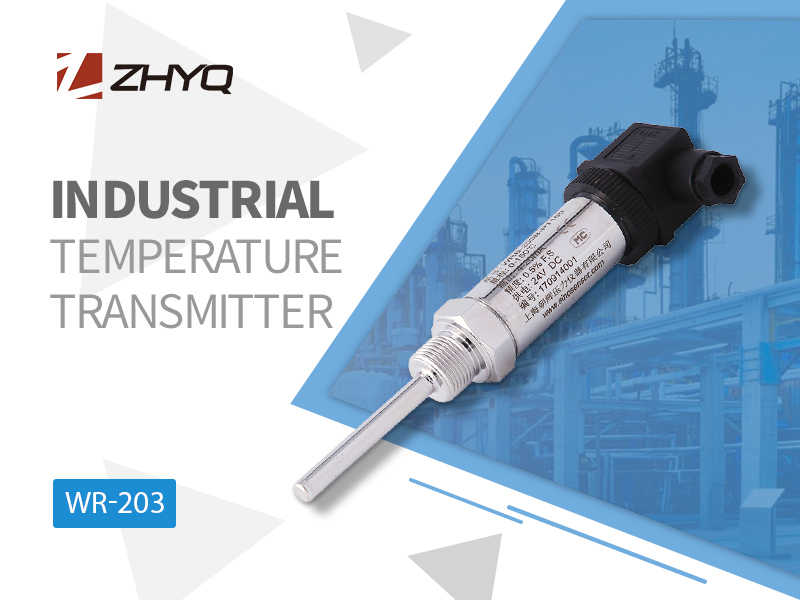Temperature is one of the most important measurement parameters that is used for monitoring and control in various industries. It can be measured with the help of a diverse temperature measurement devices. This post will discuss how temperature measurement is important in different industries. It will also detail different types of temperature measurement equipment.
How is Temperature Measurement Important in Different Industries
An accurate determination of temperature, or the measure of hot or cold, is an important factor in many industries as follows:
- Food and Beverage Processing: Measurement and control of temperature is of utmost importance for both food and beverage processing manufacturers. Temperature is one of the important factors to consider during the bulk production of food items.
- In the beverage industry, temperature plays a vital role in deciding the quality of the final product. During the wine making or brewing process, the ambient temperature, as well as fermentation temperature, could have a positive or negative effect. Even in the process of milk pasteurization, the temperature is important to ensure the removal of harmful pathogens, such as Escherichia, Salmonella, and Listeria.
- Plastic Production: Temperature plays an important role in the plastic industry. During the manufacturing stages, for example thermoforming, or injection molding, several temperature ranges needs to be monitored to ensure a high product quality.
- Metal Processing: Be it any type of metal process plant, temperature measurement is always high on the list for operational excellence. Temperature measurement and analysis is plays a key role in metal processing, as well as monitoring. If the temperature measurement information is not correct, then it can affect quality of the final product, as well as endanger workplace security.
What Are the Different Types of Temperature Measurement Devices?
There are a number of devices that are used to measure temperature. Let us have a look at each one of them:
- Temperature Transmitters: The temperature transmitters are electrical instruments featuring interface sensors that measures temperature by sensing change in a physical characteristic.
- Thermocouple Temperature Measurement Devices Thermocouples consist of two wires or strips that are made of different metals. These wires are joined at one end. As the temperature changes at the juncture, the thermocouple induces a change in Electromotive Force (EMF) between the ends. The EMF of the thermocouple increases with temperature rise.
- Change-of-State Temperature Measurement Devices: The change-of-state temperature devices comprise pellets, labels, pellets, lacquers or liquid crystals, which display a change in appearance at a certain temperature. These types of devices are used in applications such as steam traps. A sensor label is attached to the trap. When the trap exceeds a specific temperature, a white dot on the sensor label turns black. As these devices do not have a good response time, hence they don’t respond to transient temperature changes. In addition, the change in state of these devices is permanent, except in the case of Liquid-Crystal Displays (LCDs). Nonetheless, these devices can be handy when one needs to confirm that the temperature of an equipment or a material has not crossed a certain level.
- Resistance Temperature Devices (RTD): As the name suggests, the resistance temperature devices rely on the change in resistance change of a metal. The resistance rises more or less linearly with temperature. Two key types of the RTDs are the metallic devices, and thermistors. Thermistors rely on the change of resistance in a ceramic semiconductor. As the temperature rises, there is a non-linear drop in the resistance.
- Fluid-Expansion Temperature Measurement Devices: The fluid-expansion temperature measurement devices are represented by the household thermometer. These devices are mainly classified into two types, namely, the organic-liquid type and the mercury type. Also, there are several versions using gas instead of liquid. As mercury is not an environmentally friendly material, there are certain regulations that govern the shipment of devices containing mercury. Fluid-expansion temperature measurement devices do not pose explosion hazards, do not require electric power, and maintain their stability during repeated usage.
- Bimetallic Temperature Measurement Devices: Bimetallic temperature measurement devices capitalize on the difference in rate of thermal expansion between different metals. In these devices, strips of two different metals are joined together. When the device is heated, one side of the strip will expand more than the other. The resultant bending is converted into a temperature reading by a pointer. Usually, they are not as precise as RTDs or thermocouples, and do not lend themselves to temperature recording. Nonetheless, these devices do not require power supply, and are portable.
- Infrared Temperature Measurement Devices: The infrared temperature measurement devices are non-contacting. They measure temperature from the thermal radiation emitted by a material. The infrared device consists of a lens that focuses the infrared (IR) energy onto a detector. The energy is then converted into an electrical signal by the detector. This signal is then displayed in units of temperature after it is compensated for ambient temperature changes.
After knowing about different types of temperature measurement devices, it would be easier for you to select the device that best suits your requirements. Always ensure that you use the proper temperature measurement device for measurement and control. If you are unable to make a decision, you can always approach an industry expert, or a product manufacturer.

